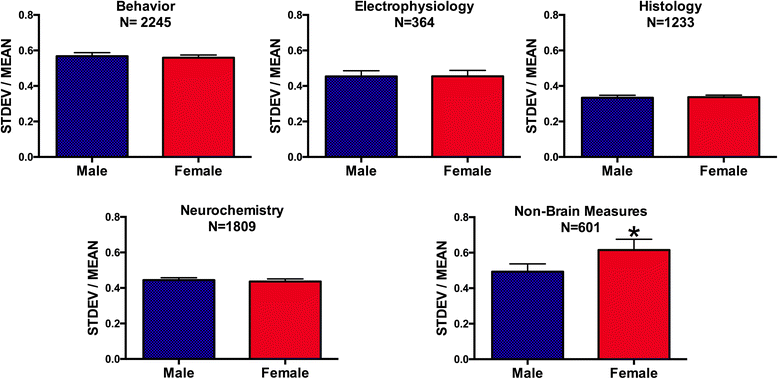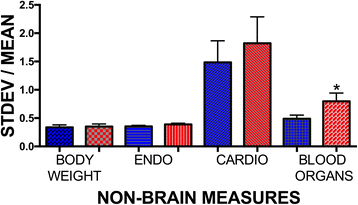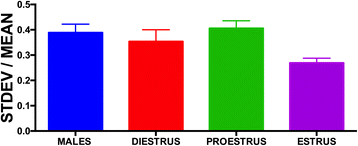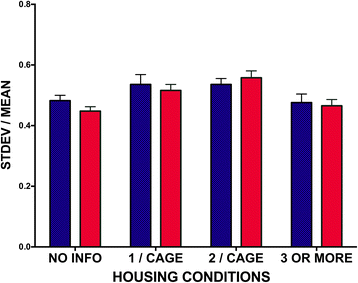Female rats are not more variable than male rats: a meta-analysis of neuroscience studies
- PMID: 27468347
- PMCID: PMC4962440
- DOI: 10.1186/s13293-016-0087-5
Female rats are not more variable than male rats: a meta-analysis of neuroscience studies
Abstract
Background: Not including female rats or mice in neuroscience research has been justified due to the variable nature of female data caused by hormonal fluctuations associated with the female reproductive cycle. In this study, we investigated whether female rats are more variable than male rats in scientific reports of neuroscience-related traits.
Methods: PubMed and Web of Science were searched for the period from August 1, 2010, to July 31, 2014, for articles that included both male and female rats and that measured diverse aspects of brain function. Only empirical articles using both male and female gonad-intact adult rats, written in English, and including the number of subjects (or a range) were included. This resulted in 311 articles for analysis. Data were extracted from digital images from article PDFs and from manuscript tables and text. The mean and standard deviation (SD) were determined for each data point and their quotient provided a coefficient of variation (CV) as a measure of trait-specific variability for each sex. Additionally, the results were coded for the type of research being measured (behavior, electrophysiology, histology, neurochemistry, and non-brain measures) and for the strain of rat. Over 6000 data points were extracted for both males and females. Subsets of the data were coded for whether male and female mean values differed significantly and whether animals were grouped or individually housed.
Results: Across all traits, there were no sex differences in trait variability, as indicated by the CV, and there were no sex differences in any of the four neuroscience categories, even in instances in which mean values for males and females were significantly different. Female rats were not more variable at any stage of the estrous cycle than male rats. There were no sex differences in the effect of housing conditions on CV. On one of four measures of non-brain function, females were more variable than males.
Conclusions: We conclude that even when female rats are used in neuroscience experiments without regard to the estrous cycle stage, their data are not more variable than those of male rats. This is true for behavioral, electrophysiological, neurochemical, and histological measures. Thus, when designing neuroscience experiments to include both male and female rats, power analyses based on variance in male measures are sufficient to yield accurate numbers for females as well, even when the estrous cycle is not taken into consideration.
Keywords: Neurobiology; Rattus norvegicus; Sex bias; Sex differences.
Figures







References
Grants and funding
LinkOut - more resources
Full Text Sources
Other Literature Sources

